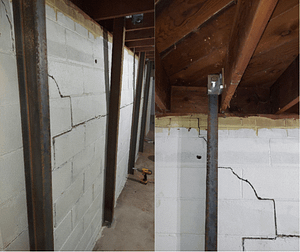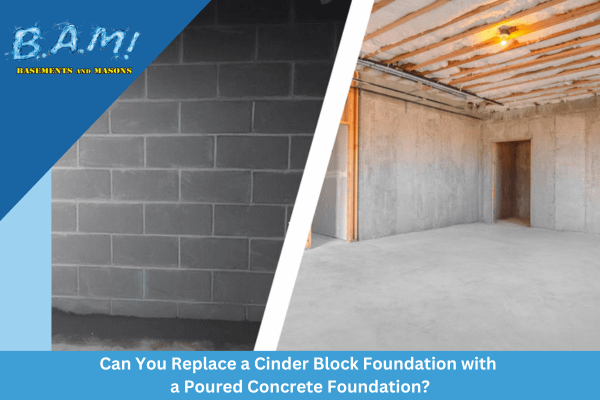The Ultimate Guide To Best Basement Waterproofing
The Ultimate Guide To Best Basement Waterproofing
Blog Article
The Definitive Guide for Best Basement Waterproofing
Table of ContentsThe Single Strategy To Use For Best Basement WaterproofingUnknown Facts About Best Basement WaterproofingIndicators on Best Basement Waterproofing You Should KnowHow Best Basement Waterproofing can Save You Time, Stress, and Money.
What triggers water damage issues in your cellar? Here are a couple of points to try to find: when the foundation of your home is endangered, water is great at sneaking in between small fractures and crevices and triggering damages. Pipes that line the within your wall surfaces are just one example of where water damages can happen.The soil and ground of your home is extremely important. If there is excessive water surrounding your home, however, it can press the dirt into your home and create the seals of your basement to come to be compromised. when you see excess water in areas where it ought to not be, that is a great indication that you have an issue.
Concrete waterproofing layers are cement-like; once dry, they stick permanently to concrete and masonry walls. You apply the finishing with a hefty brush made with bristles swirled throughout application for an eye-catching, finished look. Nonetheless, concrete waterproof finishings can't be related to previously painted surface areas Silicate-based concrete sealants, also referred to as densifiers, are additionally suitable only for walls that haven't been repainted or secured.
Best Basement Waterproofing - An Overview
Plastic sheets and panels could be integrated with indoor basement water drainage systems. They don't stop water from obtaining through the wall surface, but they do quit it from messing up points in the basement.
A sump pump is needed to relocate water out of your cellar. Below are a few things the experts can set up to assist the waterproofing procedure: this is developed for the walls of your cellar.

It additionally aids avoid the growth of mold - Best Basement Waterproofing or mold, which can be a pretty large carcinogen. Basement waterproofing is a terrific way to be successful of potential water damages that may come your method. Do not hesitate to contact local experts, like those at American Eagle with any kind of waterproofing questions you may have regarding what basement waterproofing resembles and a lot more.
A Biased View of Best Basement Waterproofing
When it comes visit this website to shielding your home, among one of the most essential actions you can take is basement waterproofing. A completely dry basement not only makes sure a risk-free and healthy and balanced setting for you and your household, top article but it likewise helps to stop pricey water damage and mold and mildew development. In this blog site article, we will certainly review the value of basement waterproofing, the benefits it supplies, and how you can set about protecting your area.

When it pertains to basement waterproofing, there are a number of approaches that can be used to maintain water out of your space. These consist of indoor sealants, exterior waterproofing membrane layers, and drainage systems. The most effective method for your basement will rely on elements such as the degree of water breach, the condition of your foundation, and your budget.
In final thought, cellar waterproofing is an important action in safeguarding your home from water damages, mold and mildew development, and various other concerns. By purchasing basement waterproofing, you can make sure that your room remains completely dry, secure, and healthy for you and your family. Not just does basement waterproofing offer satisfaction and defense for your home, Going Here but it can likewise boost its worth and conserve you cash on power expenses over time.
Unknown Facts About Best Basement Waterproofing
Inside sealants are a type of basement waterproofing approach that entails using a sealant to the within the basement walls and floorings. Water can leak into a cellar via cracks, voids, or permeable concrete, especially in locations where there is high groundwater or inadequate drainage. This can result in water damage and mold growth, along with damages to the foundation and structural integrity of the structure.
It is an efficient remedy for protecting against water damage and protecting the architectural integrity of the structure. Nonetheless, it can be costly and disruptive to set up, as it calls for excavation around the foundation and might involve landscaping and various other repair work once the waterproofing is full. Nevertheless, this technique is one of the most reputable and resilient solution for avoiding water seepage in the basement.
Foundation split shots are a method of repairing splits in the foundation wall surfaces from the within, without digging deep into the soil around the foundation. The process includes infusing a fluid polyurethane or epoxy right into the splits, which after that hardens and produces a water resistant barrier that protects against water from seeping via. This technique is typically used for smaller cracks that do not present an architectural hazard, and can be finished quickly and with minimal disruption to the building's occupants.
Report this page